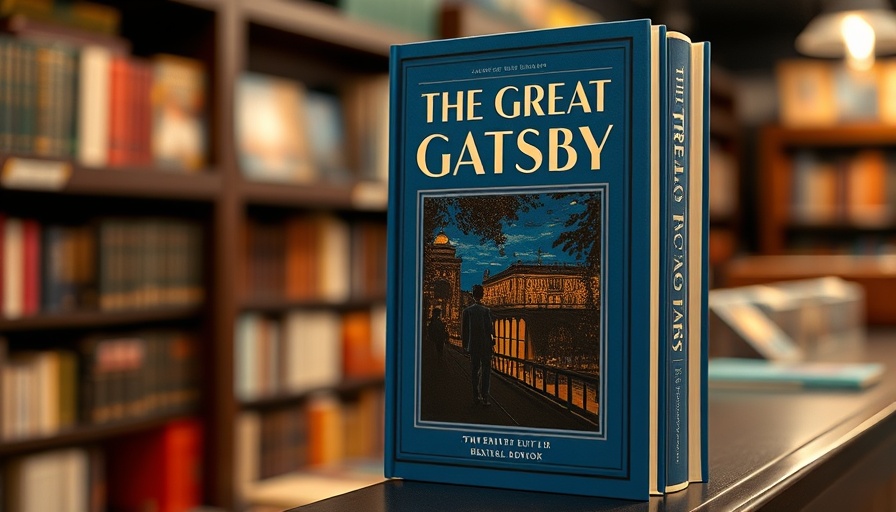
The Timeless Allure of 'The Great Gatsby'
When F. Scott Fitzgerald's masterpiece, The Great Gatsby, was published on April 10, 1925, few could have predicted that it would become a cornerstone of American literature. Now, as it celebrates its centennial, this novel remains a poignant exploration of ambition, disillusionment, and the elusive American Dream. It tells the story of aspiring millionaire Jay Gatsby and the loves and losses intertwined with his quest for success, making it relatable to many across generations.
A Cautionary Tale of Class and Yearning
Set against the backdrop of the Roaring Twenties, the story reflects the frenzy of that era while critiquing the era's moral decay. Nick Carraway, the narrator, provides a lens through which readers can view the extravagance and superficiality that defined not only the decade but also societal aspirations. Fitzgerald's character creation, especially Gatsby and Daisy Buchanan, symbolizes the duality of wealth: it can elevate but also destroy, leading to profound revelations about class consciousness in America.
The Journey from Obscurity to Acclaim
Ironically, Fitzgerald's most celebrated work did not initially achieve commercial success. The first edition of The Great Gatsby sold fewer than 25,000 copies, and its themes of heartbreak and betrayal went largely unrecognized during Fitzgerald's lifetime. It wasn’t until after his passing in 1940 that the novel gained critical acclaim, reflecting a broader cultural reassessment of the American Dream's attainability.
His Life Intertwined with Gatsby's
Fitzgerald's personal experiences significantly influenced Gatsby's tragic arc. Like Gatsby, Fitzgerald faced tumultuous highs and lows, marked by his marriage to Zelda Sayre and years spent grappling with alcoholism. This connection between the author's tumultuous life and his fictional creation gives readers a deeper understanding of Gatsby's plight, resonating with those who have faced their own ambitions and failures.
The Cultural Impact of Gatsby's Legacy
Today, The Great Gatsby's influence permeates various facets of American culture. From cinema to theater, and even memes, Gatsby’s tale has been reimagined in countless ways. It is a story that effortlessly adjusts to contemporary contexts, sparking interest in themes of wealth, morality, and personal ambition each time it is revisited. Its strength lies in its ability to remain relevant amid changing societal landscapes.
Events Celebrating Gatsby’s Legacy
This year, as San Antonio locals explore the themes and historical significance of The Great Gatsby, a multitude of events showcase the novel's continued relevance. Engage in lively discussions at local book clubs, enjoy Gatsby-inspired cocktails at speakeasy-themed bars, or catch performances reflecting its narrative at local theaters. Numerous San Antonio entertainment venues are hosting special events, immersing audiences in the world Fitzgerald so vividly painted.
Take Part in the Celebration
In San Antonio, the community is encouraged to celebrate this literary legacy through engaging local events. From art installations inspired by the Jazz Age to themed trivia nights at bars, there are ample opportunities to dive deeper into the story of Gatsby. Whether you're planning a cozy night at home with the book or looking to explore local events, there's something for everyone to enjoy.
As The Great Gatsby continues to resonate with readers and audiences alike, it is a reminder that art can bridge generations, encouraging us to reflect on our aspirations and the continuous search for meaning in a complex world. Join the celebration and discover the myriad ways this classic novel continues to inspire!
 Add Element
Add Element  Add Row
Add Row 



 Add Row
Add Row  Add
Add 


Write A Comment